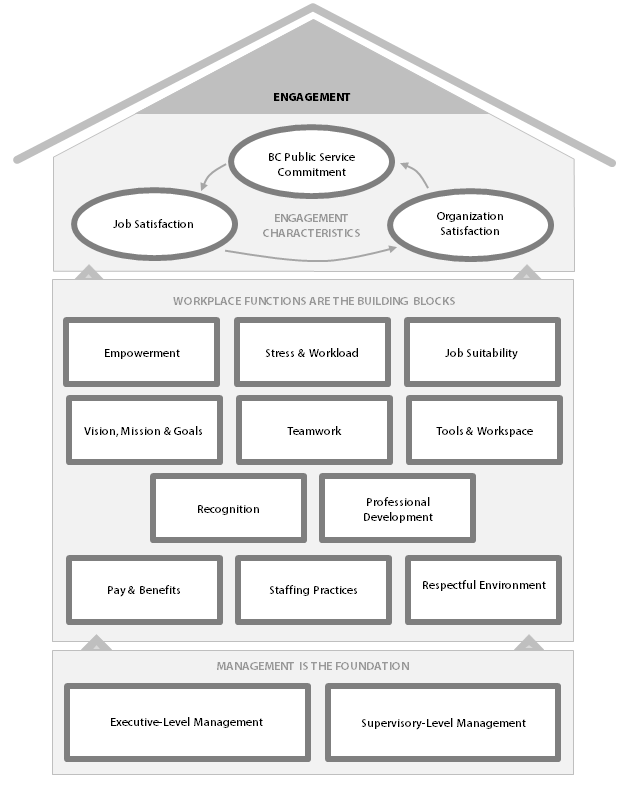Methodology
Employee Engagement Model
A key element of the Work Environment Survey (WES) program is the B.C. Public Service Employee Engagement Model. The model shows how various elements of employees’ work environment, directly and indirectly impact their engagement. It identifies the drivers of engagement, which are clusters of questions about workplace topics covering a wide range of aspects of employees’ experiences.
Drivers have the potential to increase or decrease overall engagement. They are connected and can affect each other. The connections between the drivers and the engagement characteristics shape the overall structure of the model, which is graphically represented as a “house” diagram. The diagram serves as a visual metaphor that simplifies the relationships between the different parts of the model.
- Roof: The engagement characteristics are located in the roof of the house.
- Building Blocks: These identify the core workplace functions influencing the engagement characteristics.
- Foundation: The model rests on the foundation of the two management drivers which are connected either directly or indirectly to every other driver in the model.

Quantitative & Qualitative Results
In addition to viewing survey results through the framework of the Employee Engagement Model, WES quantitative results are presented in the reports in two different but complementary ways. Results are shown as percentages to highlight the distribution of responses per question. The results are also shown as average scores, providing a single measure for each question allowing for easier comparability.
Along with quantitative data, the WES also collects qualitative data that focuses on what improvements employees would like to see in their work environment, in their own words. This qualitative data represents the voice of the survey participant beyond the scaled survey questions and provides the ‘bigger picture’ which becomes especially important when attempting to understand complexities in our work environments. To access the real stories behind the numbers found in the WES scores, both the quantitative and qualitative data is used.
ERAP Narrations Videos
Confidentiality
Related Links
Contact information
Questions about the Work Environment Survey? Contact us.
